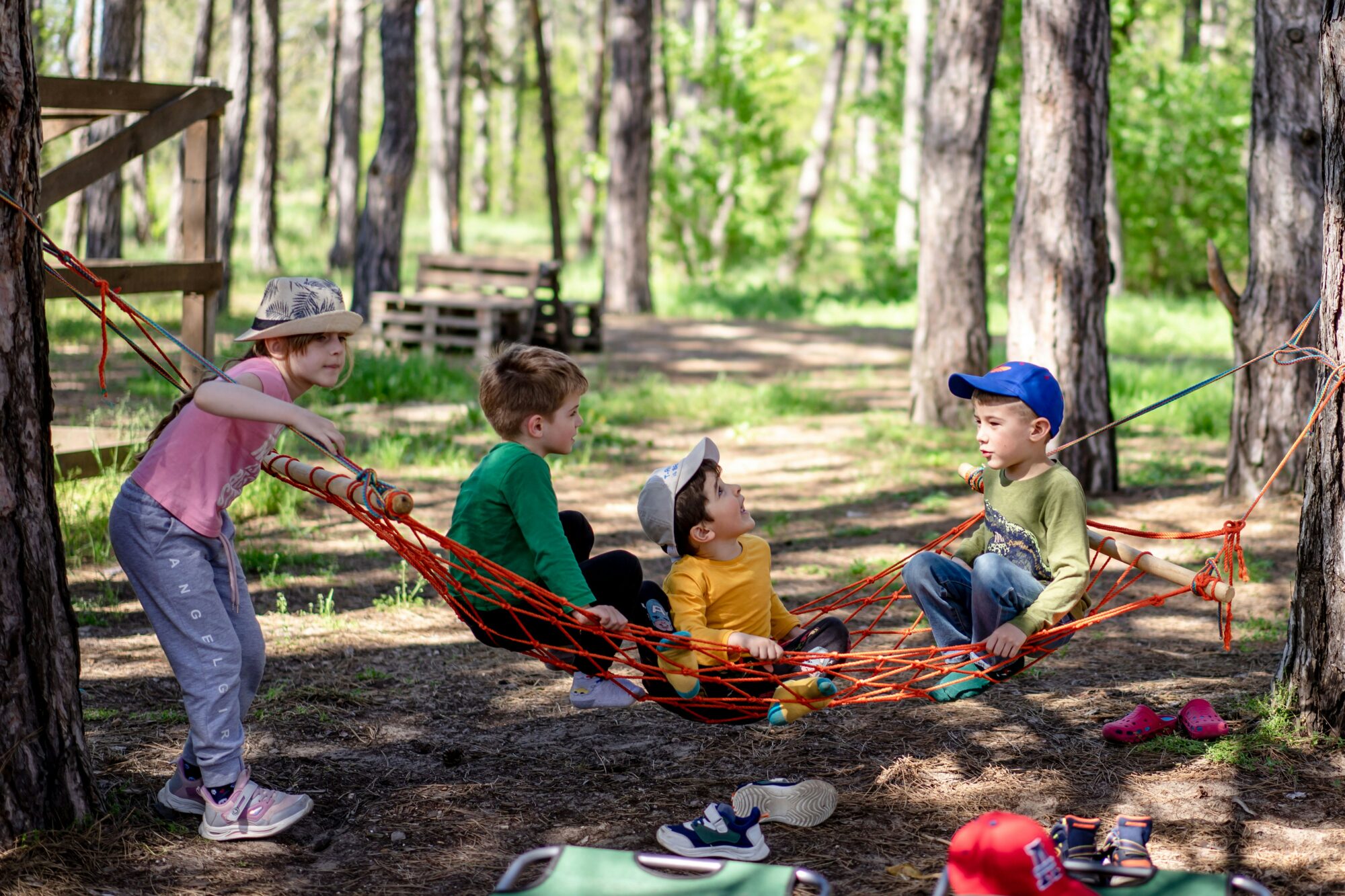Get Started with Outdoor Learning
So, you’ve heard about outdoor learning and feel that pull to give it a try. You can picture your students more engaged, more curious, and more joyful. But how do you start?
Outdoor learning isn’t about a perfect forest or a new curriculum. It’s a shift in practice, a way to use the natural world to meet the needs of the whole child. It’s where academic skills meet real-world application, where social-emotional growth is nurtured through collaboration, and where a sense of wonder is the primary teaching tool.
This page is your first step. It’s a practical, no-pressure guide to moving your teaching beyond the four walls. Let’s begin.
1: Start Small: Build Confidence for You & Your Students
You don’t need a forest. You just need to go outside.
The first step is simply giving yourself permission to use the space you have. A schoolyard, a grassy patch, or even a paved area with a few potted plants is a perfect starting point. The goal is to build comfort for you and your students.
- Try This: Begin with a 15-minute version of an indoor activity. A read-aloud under a tree or a math lesson using natural counters (pinecones, pebbles) makes the transition easy.
- Pro Tip: Success starts with routines. Create a visual “Getting Ready” chart and a consistent call-back signal (like a bird call or a chime) to manage the group smoothly.
- A Simple Starter Idea: Take your class on a “Noticing Walk.” Ask them to quietly observe with their “owl eyes” and “deer ears,” then share one interesting thing they saw or heard.
→ Ready to set up? Read all about [How to Set Up an Outdoor Classroom] here!
2. Plan for Comfort & the Elements
Being prepared is the key to enjoying the outdoors in any weather. It’s all about the right mindset and the right gear.
- For You: Keep a “Teacher Go-Bag” stocked with a first-aid kit, extra mittens/socks, a whistle, and your class list.
- For Families: Send home a friendly “Gear Guide” that explains the importance of rain pants and boots—it makes all the difference on drizzly days!
- Mindset Shift: There’s no bad weather, only unsuitable clothing. Embrace the drizzle! Some of the most memorable learning happens when worms come out after the rain.
3. Reframe “Risk” as “Responsible Challenge”
Risk is a part of learning and play. Our role is not to eliminate it, but to manage it thoughtfully and help children build risk-assessment skills.
- Language Shift: Replace “Be careful!” with specific, empowering questions like:
- “What’s your plan for climbing that log?”
- “Notice how the ground is slippery here.”
- “Is that branch strong enough to hold you?”
- Skill Building: Explicitly teach students how to carry a long stick safely (“nose to toes”) and how to identify common, safe plants in your schoolyard.
- Site Sweep: Do a quick walk-through of your outdoor space before the children arrive to check for any new hazards.
→ Our blog post, [From ‘Be Careful!’ to ‘Be Aware!’], dives deeper into this language shift.
4. Weave the Outdoors Into Your Existing Plans
You don’t need a separate “outdoor curriculum.” Look for natural connections to what you’re already teaching.
- Literacy: Go on an “alphabet hunt” to find natural objects that start with different letters.
- Math: Use sticks for measuring perimeter or rocks for sorting and creating patterns.
- Science & Art: Create land art mandalas or use fallen leaves for texture rubbings.
→ Ready for more simple ideas? Browse our [Resource Library] collection.
5. Make Reflection a Ritual
A short reflection helps students process their experience and solidify learning.
- Circle Share: End each session with a 2-minute share at your “home base.” Use prompts like: “What was one wonder you had today?” or “Show with your face how being outside made you feel.”
- Journaling: Have students keep a simple “Nature Notebook” to draw or write one observation from each outing.
Sample First Week Game Plan (A Suggestion)
- Day 1: Introduce the rules and routines. Just practice gearing up and walking to your “home base.” Stay for 10 minutes.
- Day 2: Go to your home base and do a 10-minute sensory activity (e.g., “I Spy” or a silent listening minute).
- Day 3: Try a 15-minute curriculum-linked activity from our [Resource Library Collection].
- Day 4 & Beyond: Reflect and build! What worked? What do your students want to try next?
Remember, the goal is progress, not perfection. Every minute outside is a success.
